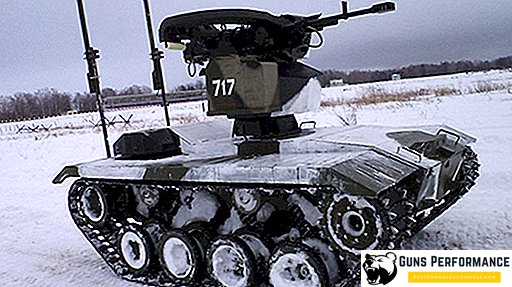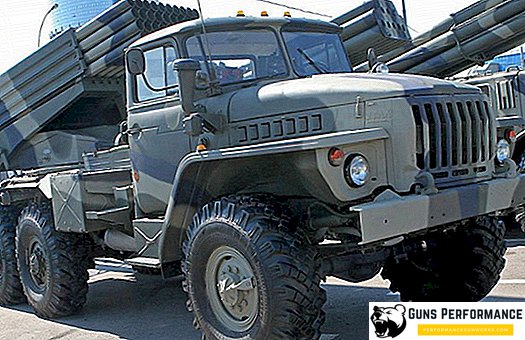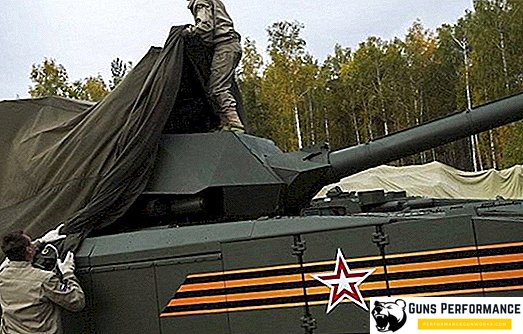IL-62 is a Soviet jet intercontinental passenger aircraft. Developed by the Ilyushin experimental design bureau in 1962 and became the first Soviet intercontinental airliner.

Overview IL-62 and its characteristics
The passenger capacity of the narrow-body IL-62 ranges from 168 to 195 people. It all depends on the layout of the passenger cabin of the aircraft, as well as its modification.
Usually the passenger cabin of the IL-62 has three classes: first, business and economy. As shown in the cabin layout, the first-class seats are located in the front part in three rows of four seats in each. The best in this case will be places located in the second row. A less successful option for booking would be the first row because of its proximity to the toilet and utility rooms.
After the first class there are business class seats. As shown in the diagram, it occupies 14 seats, arranged in three rows of six seats each. In business class there are no explicitly successful or unsuccessful places.

After the business class should salon economy class. The best places here will be located in the 11th row (according to the scheme). It is not necessary to book in economy class seats that are in the tail of the aircraft (26 and 27 row). Their discomforts are primarily related to the adjacent toilets, which can cause many inconveniences.
Aerodynamically, the Il-62 aircraft is a low-wing aircraft with a single fin tail, a swept wing, a three-post landing gear and a normal layout. The power plant of the liner is represented by 4 engines located in the tail section.
The design of the IL-62 has a number of interesting features, some of which were used by Soviet aircraft designers for the first time. So, in view of the fact that the liner has a center of gravity somewhat behind the landing gear, in its tail part there is a small fourth landing gear designed to prevent the aircraft from tipping over.
Also, the very concept of a narrow-body liner with four engines in the tail section, was, if not revolutionary, then definitely new and one of the first in the world. In this regard, the engines required stronger nacelles to avoid the loss of engines in flight and under load.
Another feature of the IL-62 is its lack of a booster system (that is, a system that allows you to control the flaps, rudders and ailerons of the airliner without much effort). This is due to the fact that, due to the special alignment of the liner, which during takeoff, it can do with a small area of steering wheels and flaps for its alignment.

Also, the IL-62 is the first jet passenger Soviet airliner, having engines with reverse thrust. This meant that the landing of the IL-62 required a much smaller strip length, and also for the quick braking the aircraft did not require a parachute system.
Flight specifications of IL-62:
| Name | IL-62 | IL-62M |
| Engine type | NK-8-4 | D-30KU |
| Takeoff thrust, kgf | 4x10,500 | 4x11000 |
| Take-off weight, kg | 161000 | 167000 |
| Number of passengers | 168-186 | 168-192 |
| Max payload, kg | 23000 | 23000 |
| Range with maximum payload, km | 7550 | 8300 |
| Range with the estimated payload, km | 9200 | 10000 |
| Cruising speed, km / h | 850 | 870 |
| Cruising altitude, m | 11000 | 11000 |
| Runway length, m | 2930 | 2250 |
| Run length, m | 1000 | 1000 |
The history of the creation and operation of the IL-62
In the second half of the 50s of the 20th century, the first Soviet intercontinental passenger aircraft Tu-114 was developed by the Tupolev experimental design bureau. Being a turboprop airliner, he initially did an excellent job with his “duties” and fully provided the necessary amount of passenger air travel over long distances.
However, already at the turn of the 50s and 60s, the civil aviation of the USSR sharply faced the need to increase the volume of long-distance passenger flights, as well as to increase the aircraft fleet of this class. The Tu-114 turboprop could not cope with this task, so it was decided to start the development of a jet intercontinental airliner. It was planned that in the future, the new aircraft will be able to make transfer flights from Moscow to Khabarovsk and to Havana.
Initially, the Tupolev OKB was to deal with the new aircraft. However, due to the fact that this bureau was already engaged in other projects, the Ilyushin design bureau took on the creation of the first Soviet jet intercontinental airliner.
Development of the aircraft, soon received the name of the IL-62, was conducted at a fairly rapid pace. So, the first prototype IL-62 was built in 1962, and in January of the next, 1963, it made its first flight. It is worth noting that the first model of the aircraft had engines AL-7, aircraft, starting from the second - newer and more powerful NK-8. After that, the four-year period of flight and ground tests of the Il-62 began, after which, in 1967, its commercial operation began.

Already the first flights showed the stability of the machine, its unpretentious maintenance and reliability. In this regard, it was decided to begin the creation of a modification of the Il-62 - the Il-62M aircraft, which has greater passenger capacity, more powerful engines and greater operational economy. Also, the design of the liner itself has undergone changes, thanks to which it has become even more reliable.
Already in 1970, the first experimental IL-62M were built, and their ground and flight tests began. Having passed them quickly and perfectly, since 1973 the plane began to be used. The Il-62M was used on the longest routes, and in 1975 its record flight was carried out from Moscow to Seattle (USA). In this case, the path of the aircraft lay through the North Pole, which definitely indicates its high reliability and power.
Meanwhile, work on the improvement of existing models of the passenger aircraft IL-62 continued. So, already in 1978, a new version of the IL-62MK was developed, which is a further modification of the IL-62M and had a reinforced wing structure and a fundamentally new design of the passenger cabin.
Until the early 90s, the IL-62 was actively used on extended passenger flights to the USSR as the main intercontinental passenger liner. However, already in the early 1990s, the situation began to change: the plane was morally obsolete, and the airlines began to stop its operation, and in the second half of the decade this phenomenon became almost universal. The last in Russia from the commercial exploitation of the IL-62 was abandoned by the company Interavia in 2009.

Today, IL-62 is used in Russia, Ukraine, North Korea and several African countries. It is also worth noting that for decades, this airliner was used as an "aircraft number 1" for the transportation of the first persons, first of all, the USSR and then Russia. Only in 1995, the IL-96 replaced the IL-62 in this role.
The liner was also actively supplied to the countries of the socialist camp, as well as to the USSR-friendly states. Thus, the IL-62 was used in Hungary, the GDR, Czechoslovakia, Poland, Cuba, Angola and other countries.
Liner modifications
There are 8 modifications of the passenger aircraft IL-62.
- IL-62 - the basic model of the aircraft, having a passenger capacity of up to 186 people. The power plant of this liner is presented in three versions. Thus, the first prototype of the IL-62 was built with AL-7 engines. From the second to the twelfth aircraft the power plant was represented by more powerful NK-8. Starting from the thirteenth machine, the NK-8-4 engines were installed on the aircraft.
- IL-62Gr - cargo modification of the IL-62. This model appeared in the 90s of the XX century in connection with the increased volume of cargo air traffic. That is why the Ilyushin Design Bureau developed a cargo version of the aircraft, which was converted from an Il-62 passenger airliner. However, due to the difficult economic situation in the country, this option was not implemented.
- IL-62D - modification of the IL-62, which has an increased range of flight, as well as improved performance. A distinctive feature of the model is the installed additional fuel tanks, as well as reduced passenger capacity (up to 100 passengers). Due to the low cost-effectiveness of the project, it was recognized as inexpedient, and its development was terminated.
- IL-62M - an improved modification of the IL-62 liner, which has increased passenger capacity, more powerful engines (D-30KU), as well as a modified body in the direction of greater strength and reliability.
- IL-62M-200 - modification of IL-62M, which has a slightly elongated fuselage and increased passenger capacity in connection with this. The development of this option was a reaction to the rapid increase in passenger traffic in the Soviet Union and the countries of the socialist camp. However, the production of this aircraft was deemed inexpedient, and it remained only in the project. Another name for this model is IL-62MA.
- IL-62M-250 is a variant of the IL-62M, aimed, like the IL-62M-200, at a further increase in the passenger capacity of the aircraft and its payload. However, it became clear that the release of a larger aircraft would not solve the problems associated with the operation of the IL-62, so the development of this model was closed.
- IL-62MGr - cargo modification, created on the basis of the IL-62M.
- Il-62MK - modification of the IL-62M with increased passenger capacity and improved interior of the passenger compartment. Also the wing design was changed.

The advantages and disadvantages of IL-62
The main advantage of the IL-62 is that this aircraft became the first intercontinental jet airliner, developed and mass-produced in the USSR. During its design, a number of design solutions were used, which were used in the development of other passenger aircraft.
The IL-62 engines can operate on a reverse engineer, which allowed the aircraft to land on shorter lanes. Also, the reinforced design of the liner fuselage significantly affected its reliability.
The main disadvantage of the IL-62 is its very specific centering, due to which its center of gravity is located behind the main landing gear. In this regard, the take-off and landing of the aircraft require special training from pilots, as well as physical data, because the control system does not have any boosters.
Another important disadvantage of the IL-62, revealed already in the 90s, was its low operational efficiency. It is this feature of the aircraft, as well as its obsolescence, and influenced its gradual decommissioning from 1995 to 2009.
Nevertheless, for its time, the IL-62 was very good and lasted for more than forty years. As for its reliability and safety, 23 of the 289 aircraft were lost, while 12 aircraft accidents occurred in which people died. Thus, the total percentage of lost Il-62 planes in accidents and disasters is about eight percent of their total number.
Conclusion
IL-62 is a milestone in the history of domestic civil aviation. A number of solutions used in its development were also successfully implemented in the design of other aircraft. Despite all the shortcomings of the aircraft, it can still be called a very successful machine, which, during commercial operation, transported tens of thousands of people who were satisfied with it.












